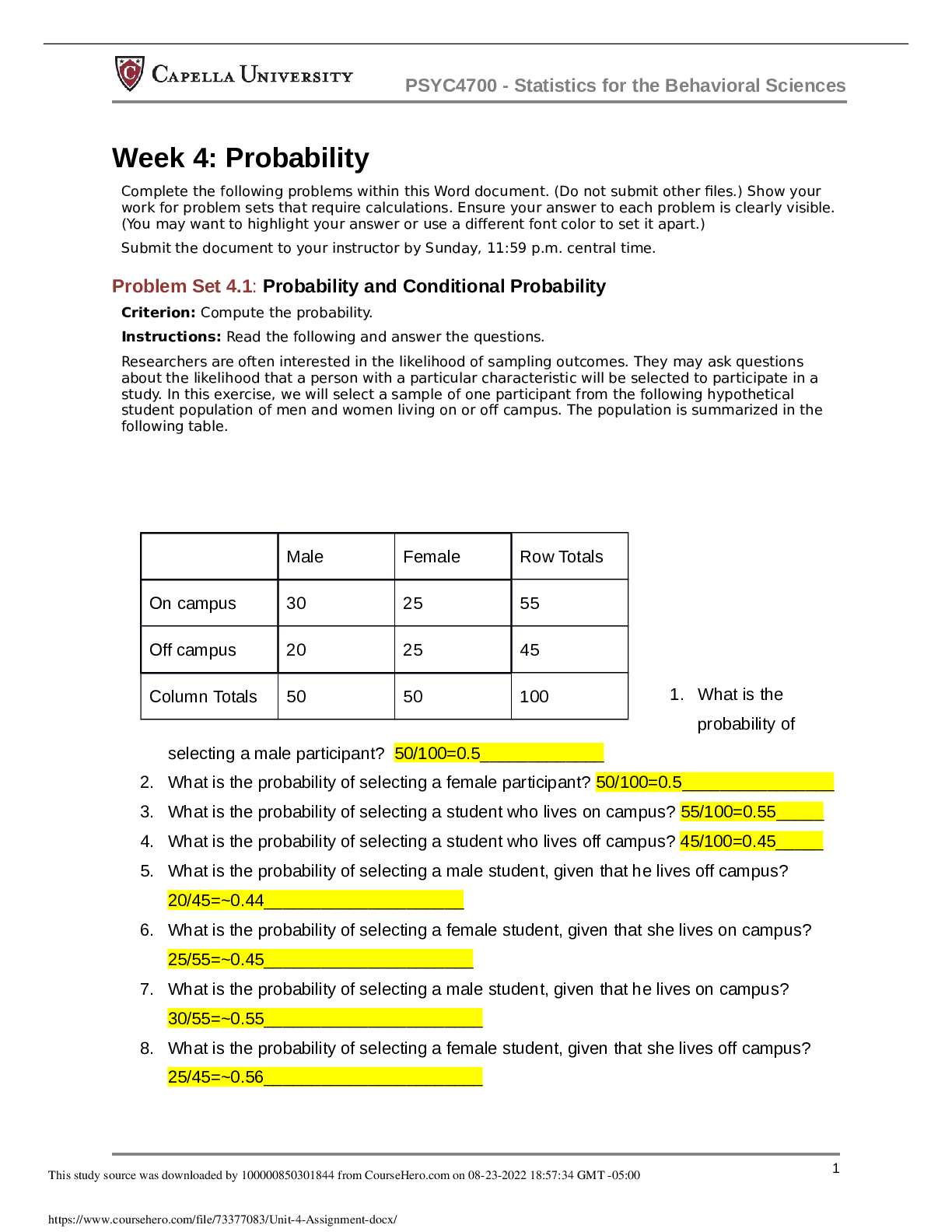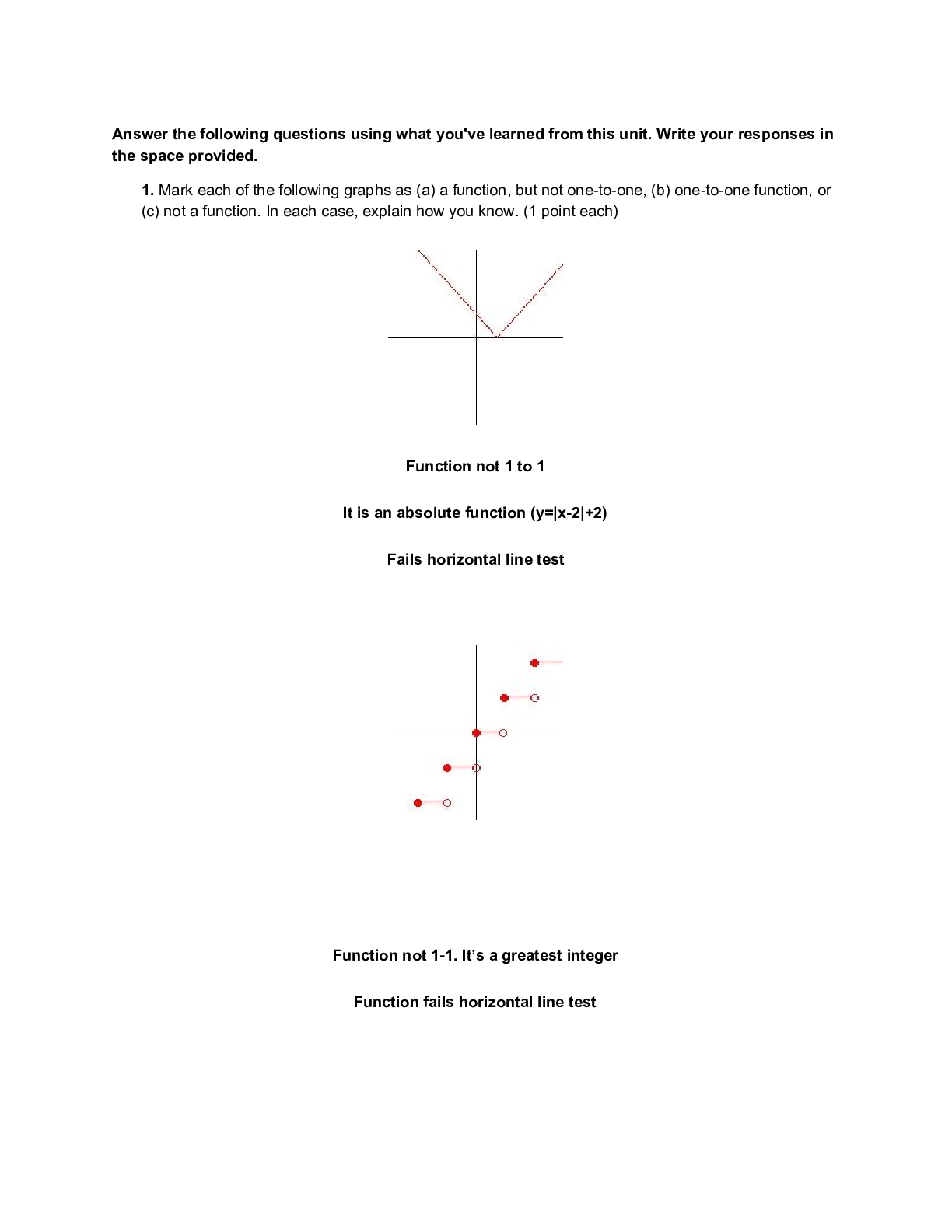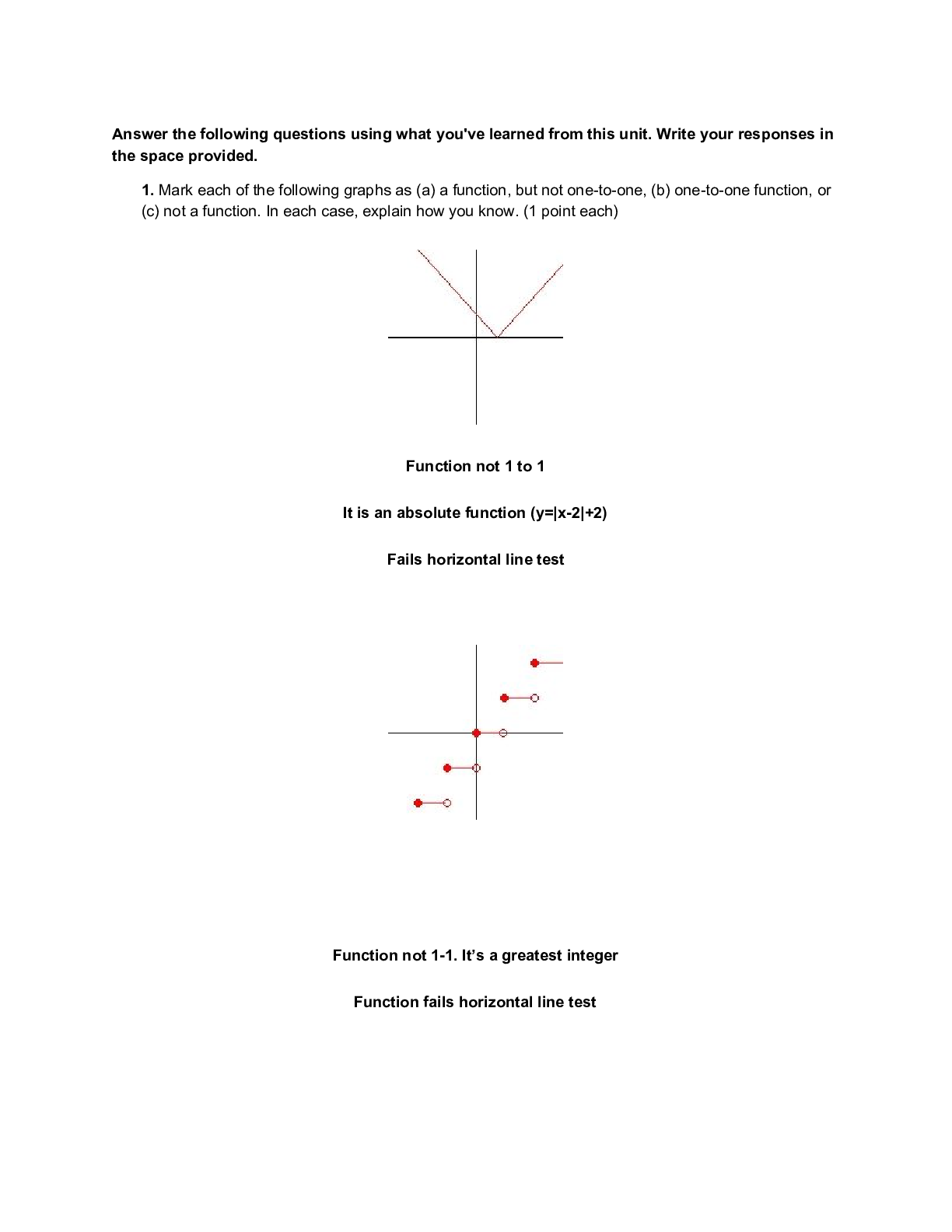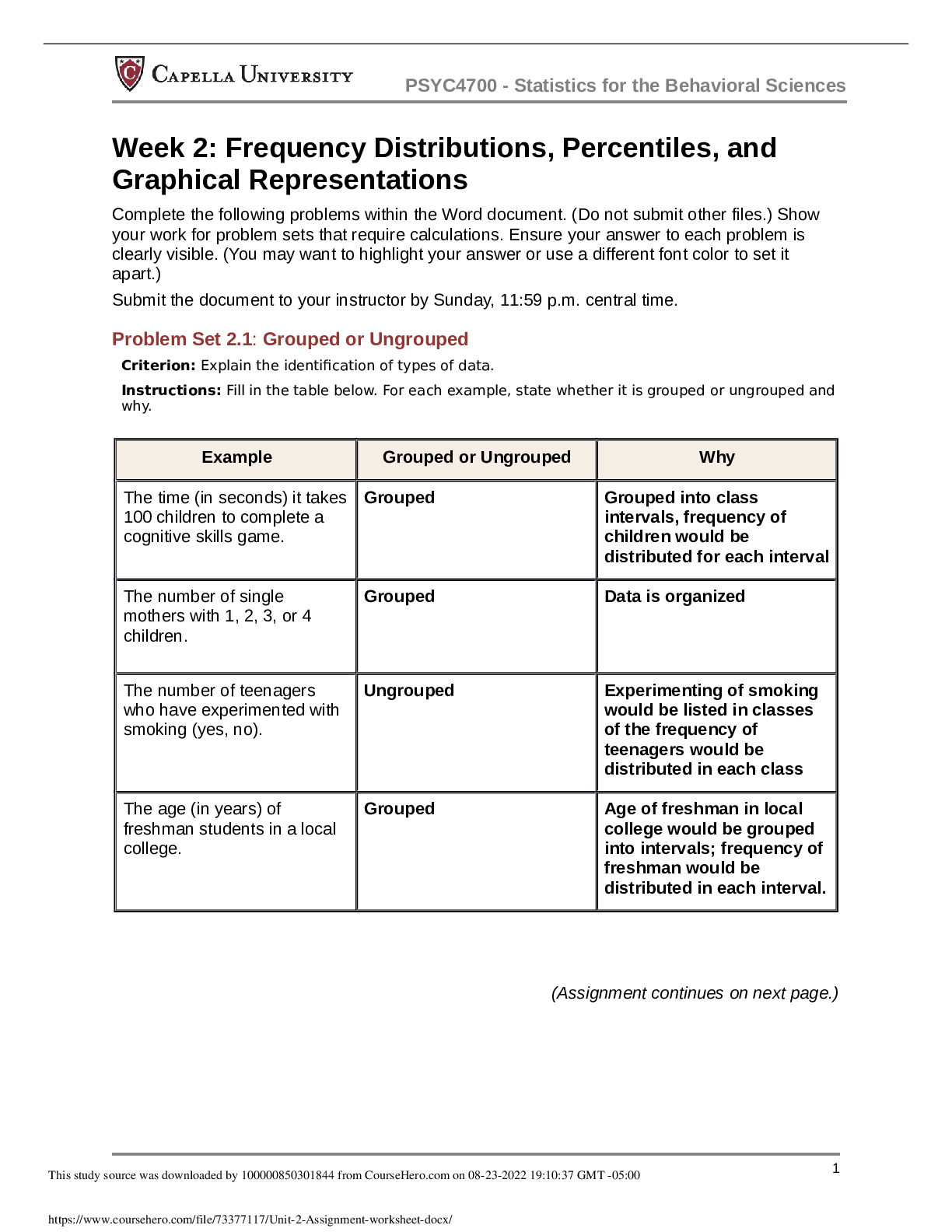Psychology > QUESTIONS & ANSWERS > Questions and Answers > Capella University PSYC 4700 PSYC4700 - Statistics for the Behavioral Scienc (All)
Questions and Answers > Capella University PSYC 4700 PSYC4700 - Statistics for the Behavioral Sciences Week 4: Probability Unit 4 Assignment
Document Content and Description Below
Capella University PSYC 4700 PSYC4700 - Statistics for the Behavioral Sciences Week 4: Probability Unit 4 Assignment Complete the following problems within this Word document. (Do not submit othe... r files.) Show your work for problem sets that require calculations. Ensure your answer to each problem is clearly visible. (You may want to highlight your answer or use a different font color to set it apart.) Submit the document to your instructor by Sunday, 11:59 p.m. central time. Problem Set 4.1: Probability and Conditional Probability Criterion: Compute the probability. Instructions: Read the following and answer the questions. Researchers are often interested in the likelihood of sampling outcomes. They may ask questions about the likelihood that a person with a particular characteristic will be selected to participate in a study. In this exercise, we will select a sample of one participant from the following hypothetical student population of men and women living on or off campus. The population is summarized in the following table. Problem Set 4.2: Determining Probability Criterion: Determine the probability. Instructions: Read the following and answer the question below. Probability of first marriage among women. A National Center for Health Statistics (NCHS) brief report by the Centers for Disease Control and Prevention (CDC) in 2009 identified that about 6% of women in the United States married for the first time by their 18th birthday, 50% married by their 25th birthday, and 74% married by their 30th birthday. Based on these data, what is the probability that in a family with two daughters, the first and second daughter will be married by each of the following ages? Problem Set 4.3: Understanding Normal Distribution Criterion: Solve problems with information about normal distributions and probabilities. Instructions: Read the following and answer the questions. Judging the humorousness of “lawyer” jokes. Stillman, Baumeister, and DeWall (2007) conducted a study where participants listened to a variety of jokes. To determine how funny the jokes were, the researchers asked a group of 86 undergraduates to rate the jokes on a scale from 1 (very unfunny) to 21 (very funny). Participants rated a “lawyer joke” as one of the funniest jokes, with a rating of 14.48 ± 4.38 (M ± SD). Assuming that these data are normally distributed: Problem Set 4.4: Calculating z Scores in SPSS Criterion: Calculate z scores using SPSS. Data: The following is a list of how senior citizens rated the Internet on a 1–10 scale, with 1 being “really distrust it” and 10 being “completely trust it”: 8, 9, 4, 6, 8, 5, 1, 9, 7, 6 Instructions: Complete the following steps: a. Enter the data into SPSS using the variable name Rating. b. In the Toolbar, click Analyze, select Descriptive Statistics, and then select Descriptives. c. Select Rating and then click Arrow to send data over to the right side of the table. Check the box Save Standardized Values as Variables. d. Select Options, check the boxes Mean and Standard Deviation, and then deselect all other boxes. Click Continue. e. Click OK and then copy and paste the descriptive statistics table below. f. Go to the Data View in SPSS. You will see that the z scores have been added to the file. Paste a screenshot of the Data View, showing the z scores, into the Word document. g. Answer: Which rating is closest to the z score of 0? 10-6.3/2.49666=1.48197993 Problem Set 4.5: Define Problem for Final Paper Criterion: Define a problem in the social sciences. Instructions: Write a well-written paragraph that includes the following: a. Topic sentence establishing the topic and variables. b. Evidence of what the problem is. c. Evidence of how many people have the problem. Problem Set 4.6: Literature Review, Part 1 Criterion: Synthesize sources. Instructions: Write two well-written paragraphs that include the following: a. Topic sentence with main idea. b. Evidence from at least two different sources that support the main idea. c. An analysis explaining how the evidence relates to the topic sentence or how the main idea relates to the problem (established in Problem Set 4.5). [Show More]
Last updated: 1 year ago
Preview 1 out of 5 pages

Buy this document to get the full access instantly
Instant Download Access after purchase
Add to cartInstant download
We Accept:

Reviews( 0 )
$8.00
Document information
Connected school, study & course
About the document
Uploaded On
Aug 24, 2022
Number of pages
5
Written in
Additional information
This document has been written for:
Uploaded
Aug 24, 2022
Downloads
0
Views
35
















